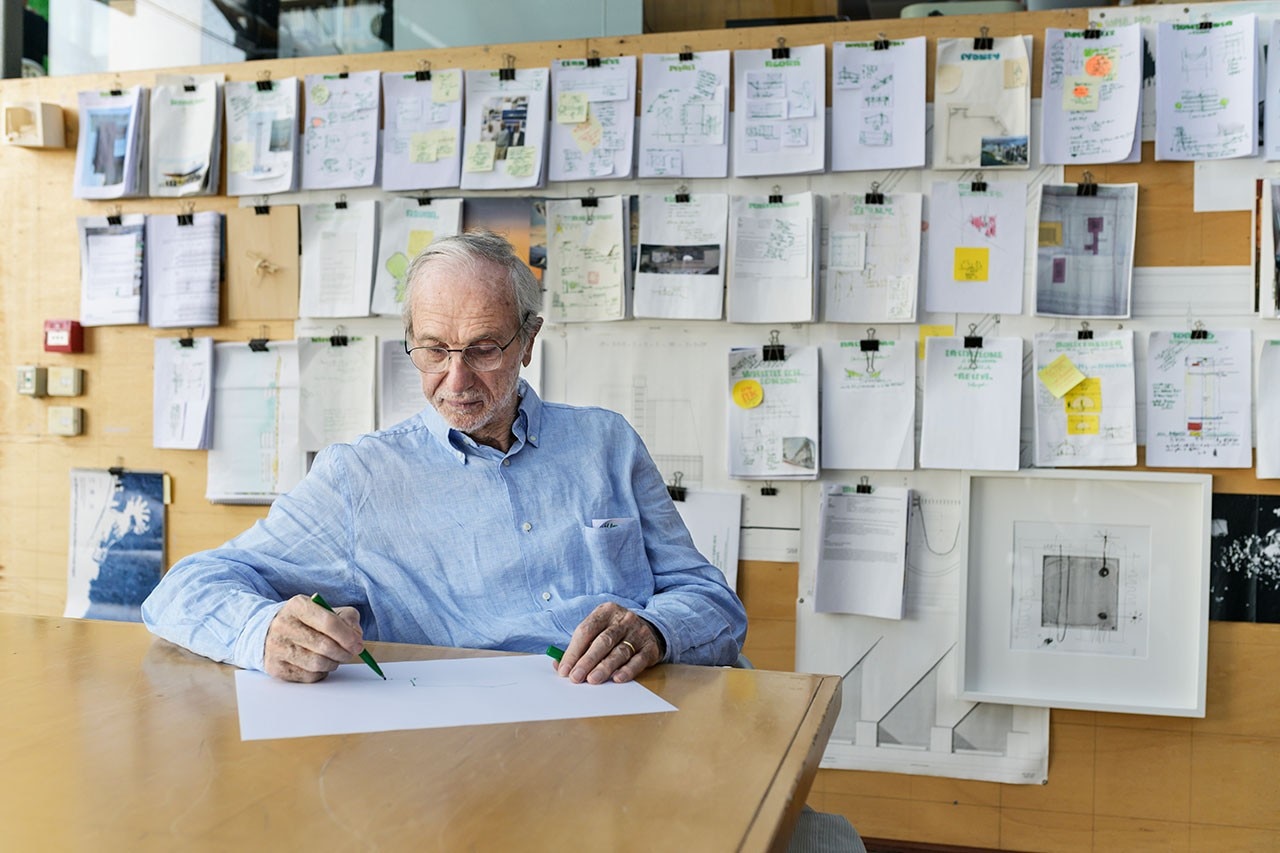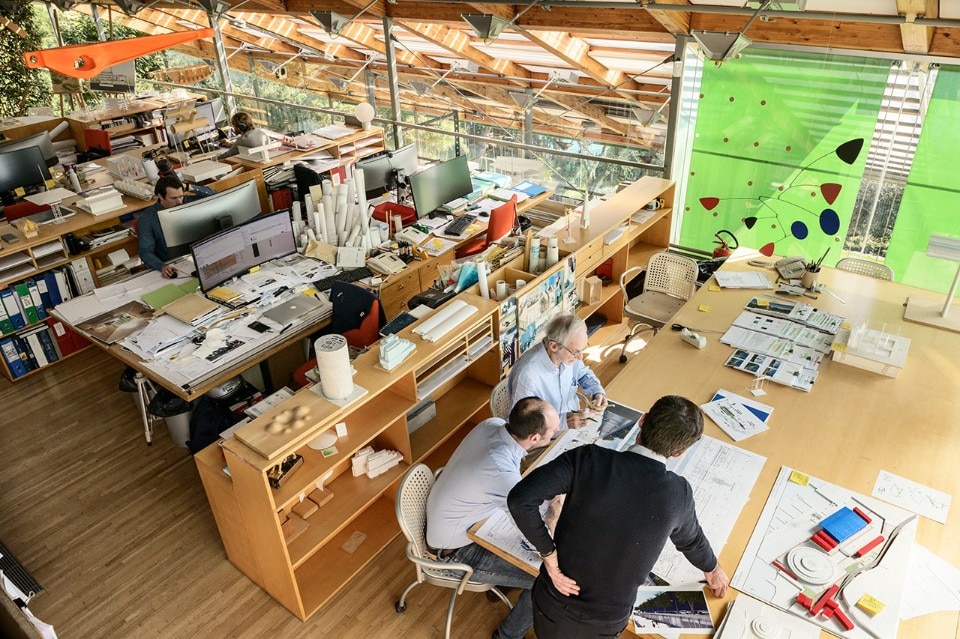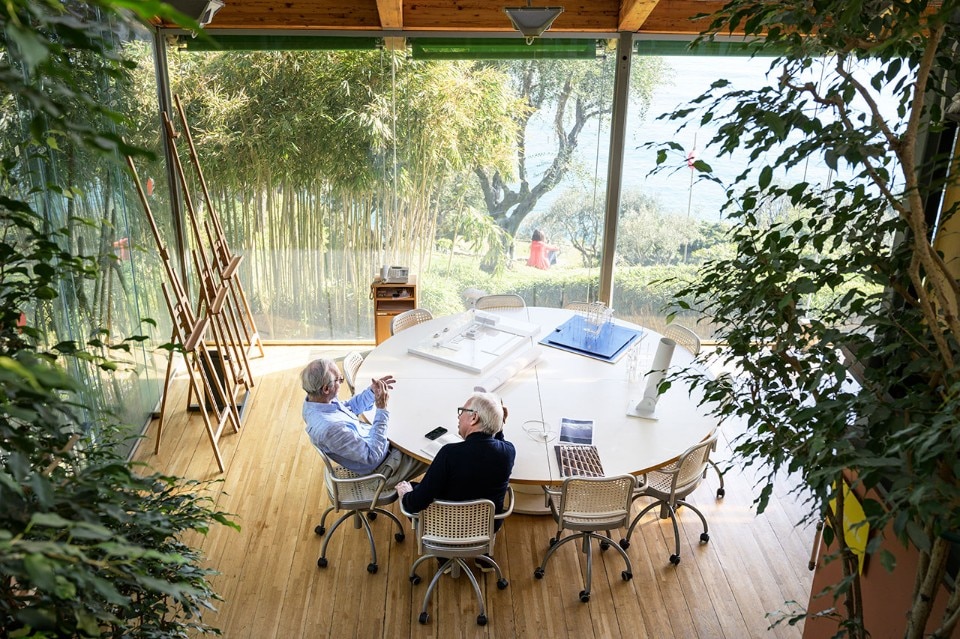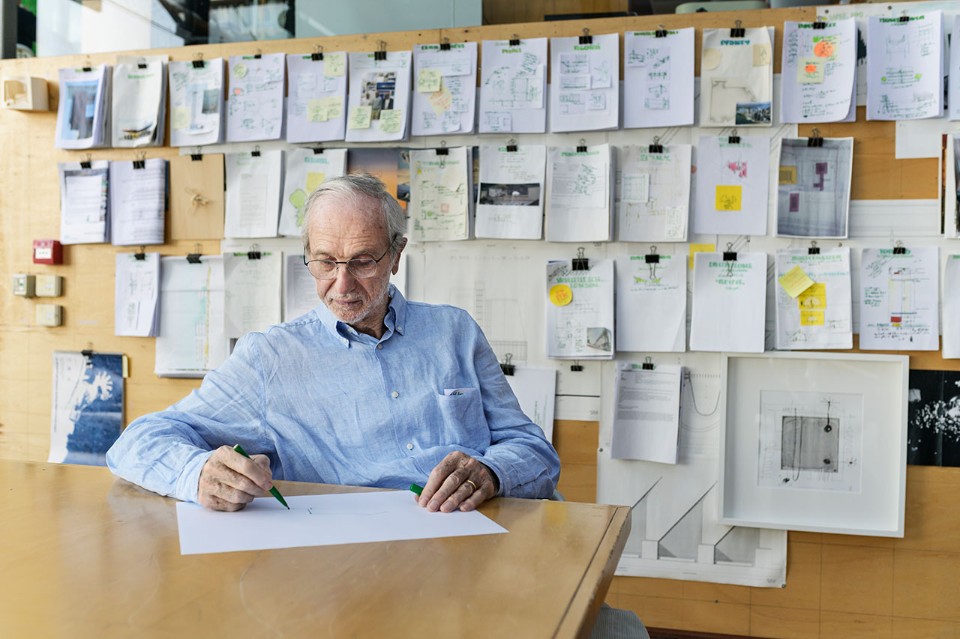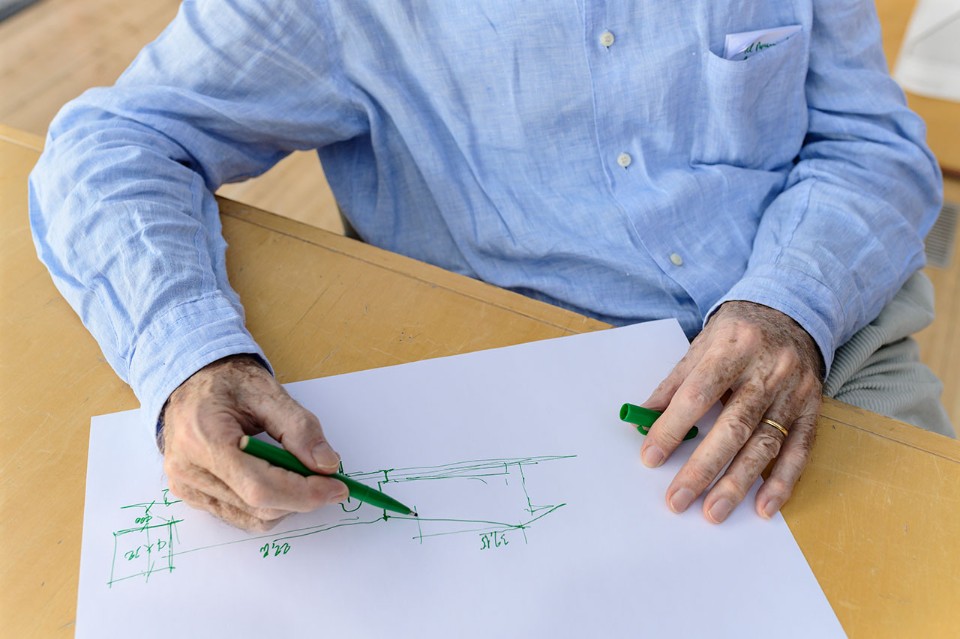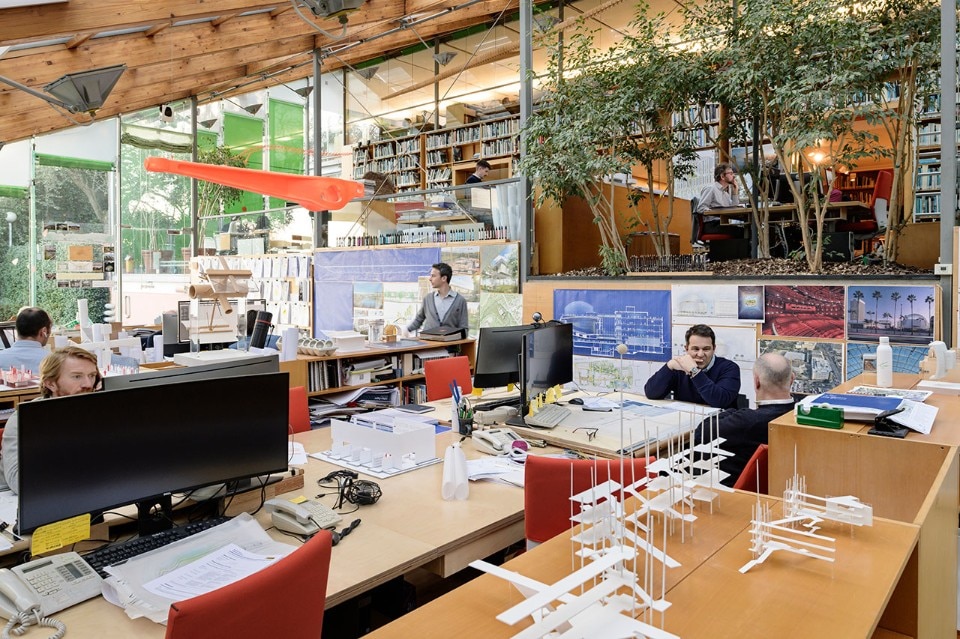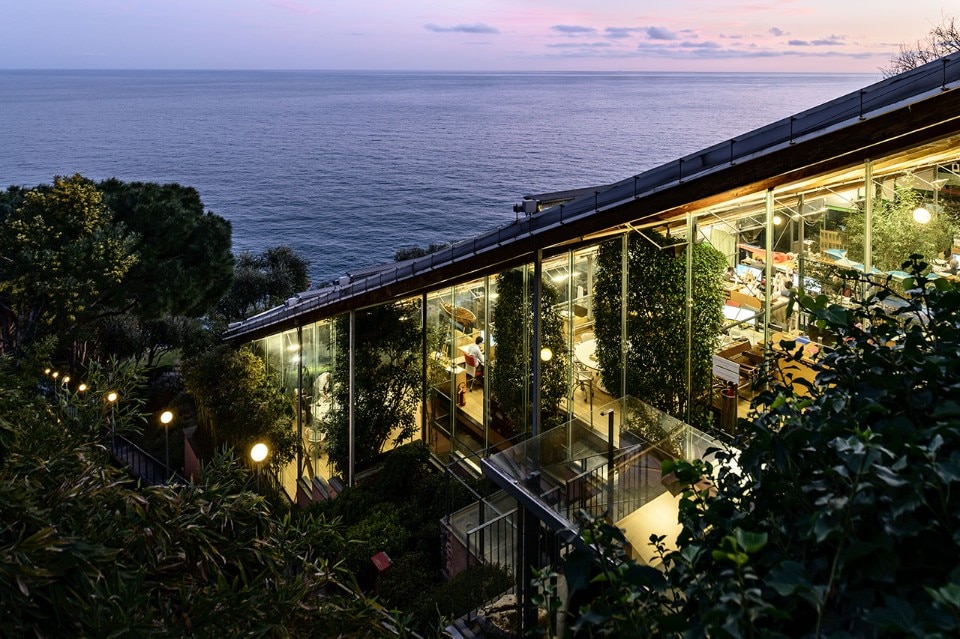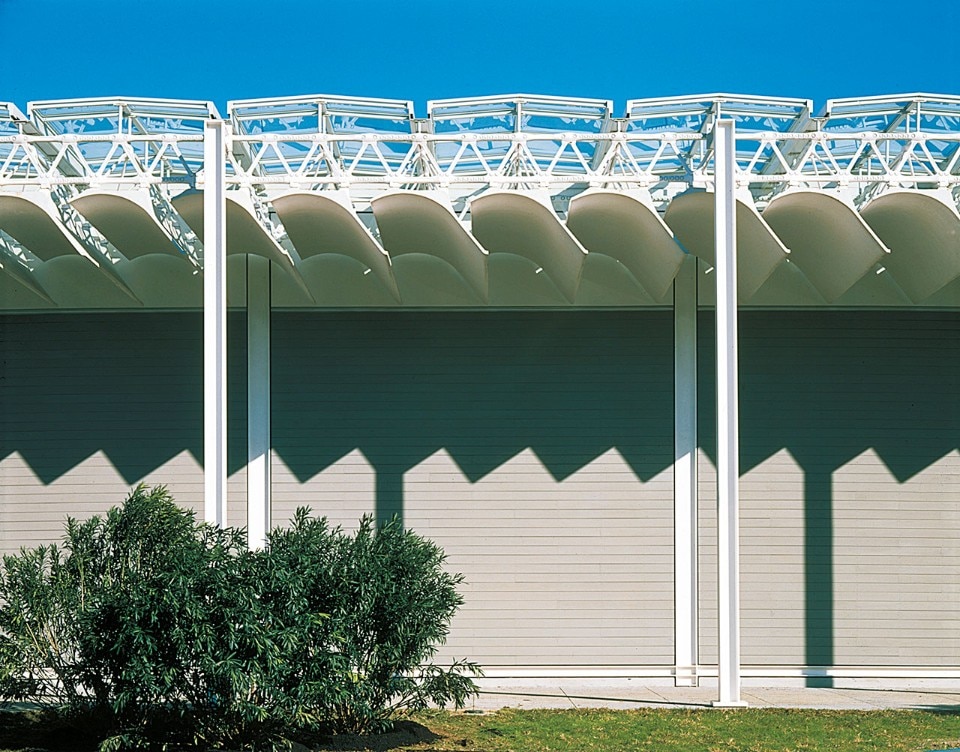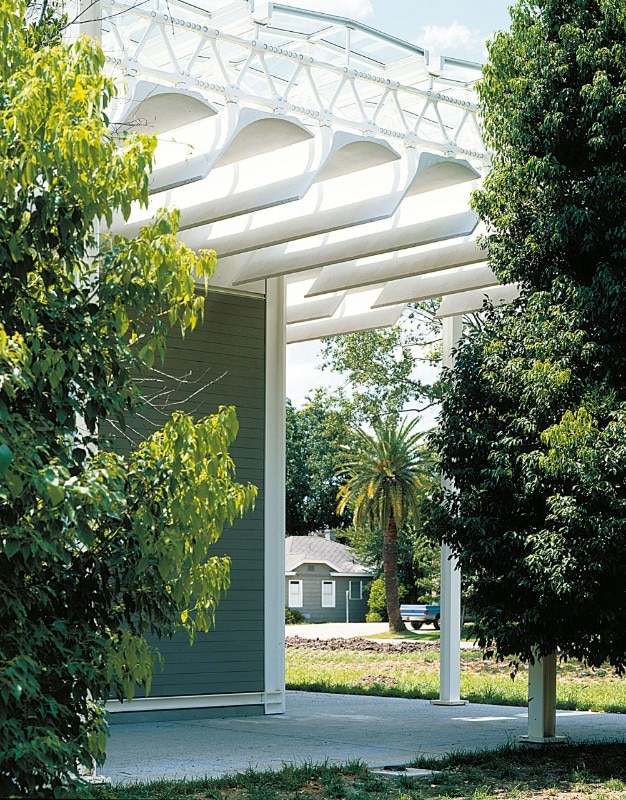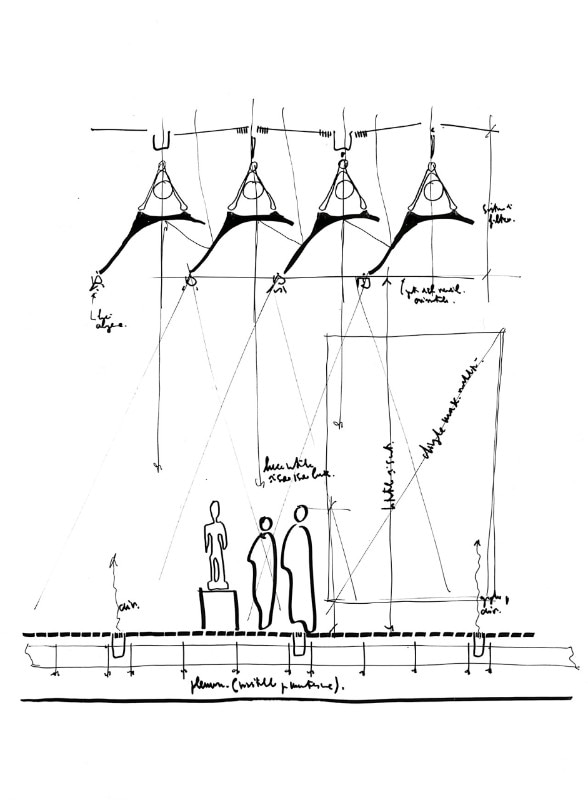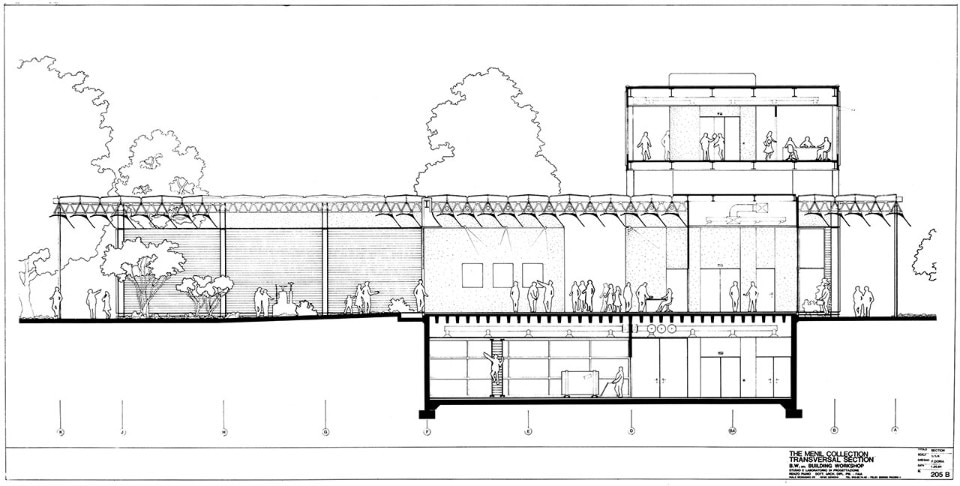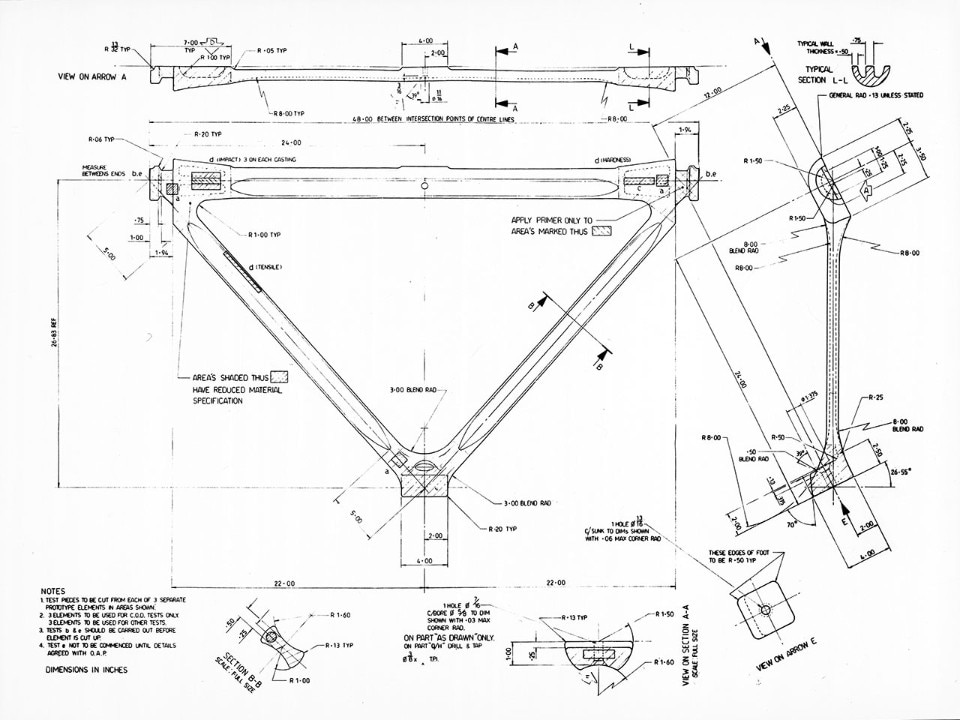This article was originally published on Domus 1045, April 2020.
There can be few offices more beautifully located than the Genoa studio of Renzo Piano. Nor can there be many architects’ offices that so powerfully convey the character and spirit of the practice they house. Located just to the west of Genoa, built on land owned by his family, the building is arranged as a cascading series of spaces under a sloping glass roof overlooking the Ligurian sea. Despite the fact that so few of his projects are set in Italy, Renzo Piano remains committed to his place of birth, where he maintains his position as the country’s most important architect.
The studio, reached only by an appropriately futuristic glass lift, has an atmosphere of heightened focus and intensity arising from the combination of its spectacular and isolated location as well as its sophisticated international standing. Within this building, dominated like many of his buildings by a sense of lightness and transparency, architects are busy working on projects all over the world. The studio, immaculately organised yet full to the point of being cluttered, is as much defined by the displayed work as the architecture and its extraordinary location. Looking at thousands of sketches, drawings, models and prototypes scattered across the studio – as well as the exhibition spaces, the foundation and nearby archive – it is clear we could see all this as belonging to one big Renzo Piano project that puts ideas of research into technology, construction and making at the centre of the design process. The atmosphere of investigation and evolution is promoted not only by models and sketches with the tangibility or access they convey, but by the consistency of the work itself and the confident sense of purpose that emanates from the studio.
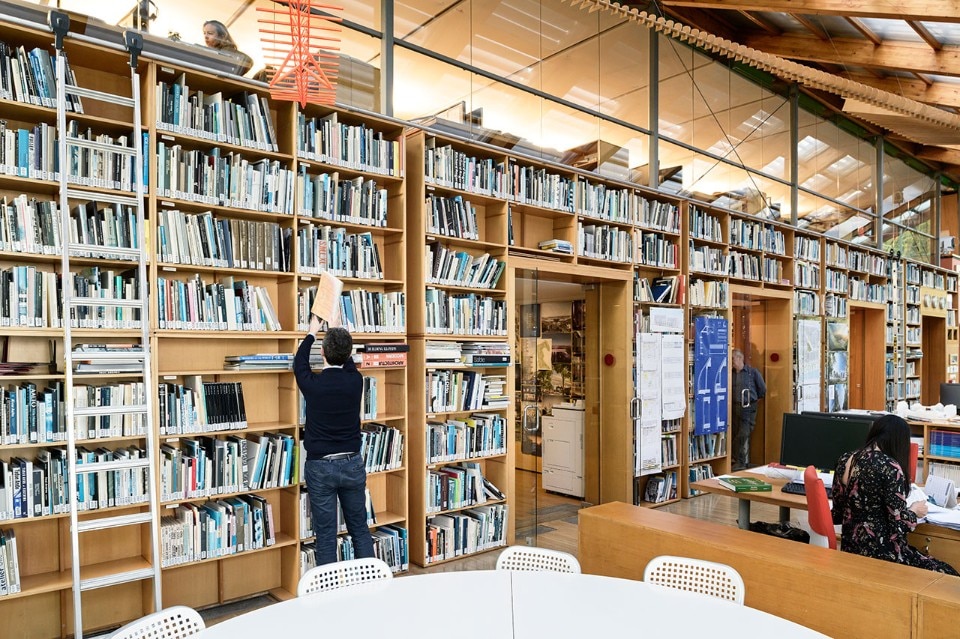
Renzo Piano’s interest in construction and material experimentation is well known. His background as the son of a builder, working for Franco Albini and with Marco Zanuso; his interest in Jean Prouvé; and dedicating his early years as an architect to research in construction; all this still invests the studio with an almost empirical solidity and gravitas. Although Piano has always drawn and sketched more than most architects, and always talks poetically about the role of architecture, he rejects the idea favoured by many architects of it as an artform. The deterministic approach of his early research has never been left behind; architecture is subject to purpose and performance. The studio is a research laboratory as much an atelier, and the modelmaking workshop sits both symbolically and functionally at the visible heart of the office. While we talk, Piano takes out his tape measure and recalls how the engineer Peter Rice, his great friend and collaborator, always measured everything, relishing precision. Piano still keeps this habit, revealing his interest in the world of realities and making rather than impressions and images.
The studio is at the same time immaculately organised and full to the point of being cluttered
The interest in performance, technology and construction is not an end in itself. Piano has always considered the social role of architecture as its reason. This purposefulness is reinforced by considerations of technical performance. The consistent idea in the work represented in his office, publications and exhibitions depends on two devices of investigation: the generative sketch examining an overall concept, organisation and gesture, and the models that express both investigation and resolution. While the walls of many architecture studios are dominated by formalistic studies in the language and image of buildings, in this studio there is a refreshing absence of such material, particularly computer-generated images. The form of the building comes as a consequence of the conceptual sketch that determines order and geometry, and also from a deep concern about how the building is put together. As such, form and identity develop out of the design process.
“I never start with a shape,” Piano tells me, instead describing how he looks for possibilities in the programme and challenges in the building idea. “I never know what a building should look like,” he repeats as we continue our tour through the office. The importance of these drawings and models we look over is not accidental nor is it based on a concern with presentation. They are pieces of design that simultaneously demonstrate investigation and resolution. The role of such a physical representation of parts of buildings seems to be an attempt to find proximity to construction itself, a compensation for the distance that the design process often creates, and one increasingly forced on us through contractual process and tendencies in the construction industry. At a time when architects seem to be losing hold of executive authority over the making of buildings and so have learned to be less interested in this dimension, it is interesting to visit an architect who, for over fifty years, has been deeply fascinated by the way a building is conceived and built. Throughout the studio it is evident that this understanding and interest is critical to the conceptual process.
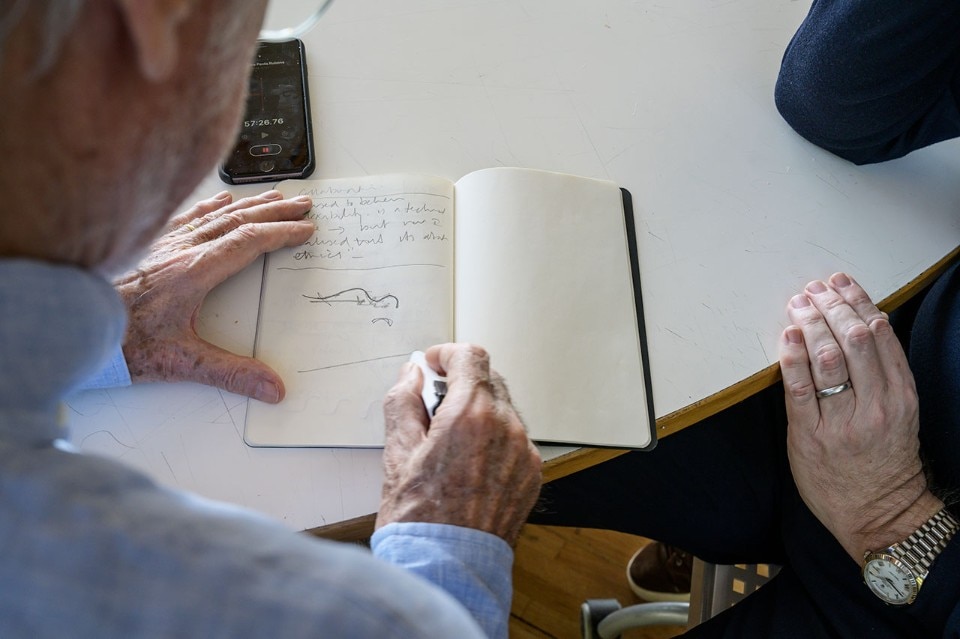
Another theme I am eager to discuss with Piano is the importance of collaborations and partnerships. These seem to be fundamental to his approach, the most famous being that with Richard Rogers, who remains his best friend. In addition to a personal bond, their relationship demonstrates a common belief in the collective nature of the profession. The work of the Piano and Rogers partnership is most identified by the Centre Pompidou in Paris. A truly visionary project where construction, technical innovation and social purpose created one of the twentieth century’s most radical buildings. Perhaps more than any other, it made a statement not only about structure and services as a fundamental and inspiring part of architecture, but also of the more general importance of engineering to the design process. To give engineers and other technical consultants a leading place at the table was a departure for the profession. Their presence was not as support but part of the generating of ideas, bringing together critical intelligence and experience from different viewpoints. This is only possible if you believe that construction, the way structure and systems integrate, are fundamental to the architectural project and not just necessary requirements.
While outwardly technology has been a dominant theme of Renzo Piano’s work, he sees this as a component of a wider vision for architecture related to lightness, efficiency, transparency and flexibility. “Before I started to work with Richard, I thought that flexibility was a technical issue but then I understood it was a question of ethics,” he says. Hence flexibility is not just the ability to change and adapt, but also provides distinction between the fundamental constructional elements of the building and what might be seen as the functionalising elements. The contrast between the elements that work for the building and those that work for the programme is not only a device of planning and process but also one that gives great visual clarity to the architecture. In this way the concept of flexibility deals with both the idea of change and with architectural expression.
While we talk, Piano takes out his tape measure and recalls how the engineer Peter Rice always wanted to measure everything
Enthusiasm pervades Renzo Piano’s Genoa studio at a time when many architects tend to define themselves through conflict and resistance, invariably seeing our profession as one of subversion and complicity in the fight for values and ideals that would otherwise be neglected. This can often determine our tone, varying between wariness, resigned complicity or even outrage. Renzo Piano stands well above such postures, maintaining a kindly confident sense of purpose. Above all, he carries lightly the scars and wounds that he must have suffered through his long campaign.
“I think I’m very stubborn,” he says in a rare concession to the idea of professional struggle. Even at this stage of his career, like his studio and everyone and everything around him, he radiates a positive outlook and a compelling curiosity about the making of buildings and the important role that architecture plays in society and community. Renzo Piano’s work seems as timeless and modern as ever, happily pursued in this extraordinary space. I am sad to leave this view of the sea and of everything else.


